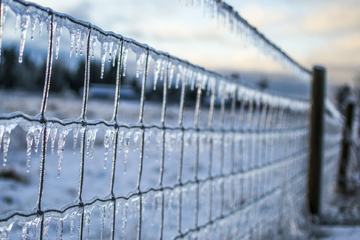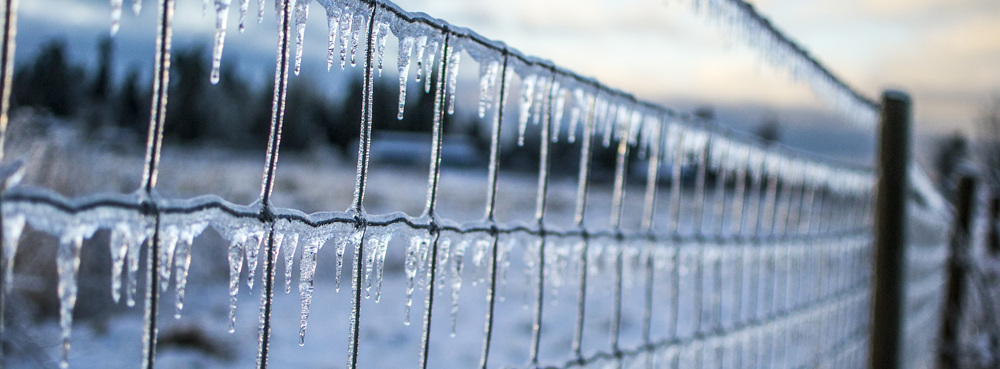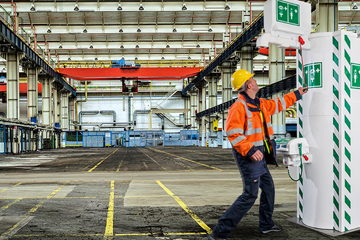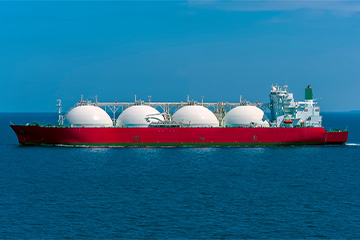Enquiry List () (0)
- 23 Nov 2021

Are your safety showers ready for winter?

With winter on the way, are you sure that your safety showers can survive the cold? It’s important to consider how a fall in ambient temperature could affect this life-saving equipment, especially if the units are placed outdoors.
We’ve compiled a list of questions to help you consider if your safety showers and eye/face wash equipment is prepared.
1.Are the feed pipes lagged and traced?
Showers with frost protection stop the water within the safety shower from freezing, but if the feed pipes are exposed to cold ambient temperatures with no protection water could freeze before it reaches the shower. Not only can this cause damage to the shower but will also render it unusable in the event of an emergency.
Ensure any and all feed pipes are insulated, and trace heated so your safety shower works if needed.
2.Are you activating your showers weekly?
International and European standards recommend that safety equipment is visually inspected and activated weekly to ensure reliable and effective operation. Weekly flushing also helps to prevent any sediment build up in the standpipes of the unit.
Performing this weekly activation offers peace of mind that your emergency equipment is in full working order, and ensures you remain compliant.
Click here to watch our weekly activation video for tips.
3.Are your safety showers serviced regularly?
If your safety showers are not in full working order, your workforce could be at risk. Regular servicing is paramount to keep your safety showers and eye baths up to scratch.
We recommend your safety showers and eye/face wash equipment is serviced at least once a year to maintain this essential life-saving equipment, so it operates perfectly when needed. Failure to keep your safety showers in good working order could result in significant fines and/or imprisonment.
For complete peace of mind, sign up to one of our new Essential or EssentialPlus service contracts.
4.Have you got the correct safety shower?
Frozen safety showers can’t protect anyone and a shower that doesn’t provide tepid water can make a chemical spill or splash worse.
- Our freeze-protected range of safety showers are the ideal solution for use outdoors where there is a possibility of the water inside the shower freezing. Choose from trace-tape heated and insulated or heated models, with wall-mounted or floor standing options.
- The STD-TC-100K/45G has a 300-litre tank and 3kW heater with a thermostatically controlled mixing valve to ensure the delivery of tepid water. Designed to remain on standby to deliver warm water for over 15 minutes, conforming to European and ANSI standards, the temperature-controlled model is intended for use in low ambient temperatures. This unit can also be used to feed heated water to other showers in the vicinity.
- For more remote sites or those without a consistent potable water supply our emergency tank showers with immersion heaters are the perfect option. Alternatively for extreme cold climates the polar tank showers incorporate a double-skinned fibreglass insulated cubicle to protect the user from the elements.
Safety showers available to hire
If your permanent units are out of order or you want a temporary safety shower whilst you wait for your new one to be delivered, consider hiring from Hughes. Our 1200L mobile hire showers are self-contained and immersion heated and capable of providing an ANSI and EN standards compliant flow of tepid water for over 15 minutes at a rate of 76 litres per minute.
We’re here to help
Health and safety of workers should be taken seriously. That means considering how seasonal changes could affect your safety equipment. Talk to Hughes today to ensure you have everything in place to protect the safety of your workforce.












